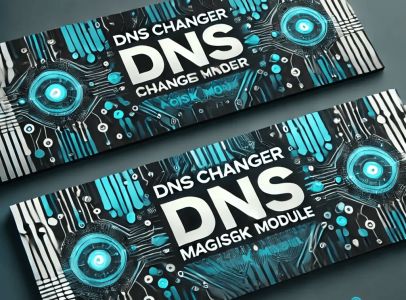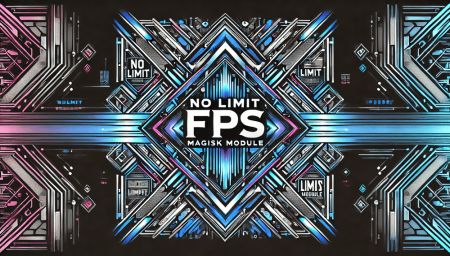Color Os Optimizer For Rooted and Non Rooted Phone
.png)
Color Os optimizer |EMERGED AS A TRANSFORMATIVE |
Work on Magisk/Kernelsu and |AS A TRANSFORMATIVE FORCE, |
Non Rooted Phone mengoptimalkan kinerja system Cloud |IT INFRASTRUCTURE AND SERVICE |
computing has emerged as |INFRASTRUCTURE AND SERVICE DELIVERY. |
a transformative force, reshaping |AND SERVICE DELIVERY. THIS |
the landscape of IT |SERVICE DELIVERY. THIS ARTICLE |
infrastructure and service delivery. |DELIVERY. THIS ARTICLE AIMS |
This article aims to |THIS ARTICLE AIMS TO |
unravel the intricacies of |ARTICLE AIMS TO UNRAVEL |
cloud computing services, exploring |AIMS TO UNRAVEL THE |
the diverse array of |TO UNRAVEL THE INTRICACIES |
offerings that empower businesses, |UNRAVEL THE INTRICACIES OF |
individuals, and organizations to |THE INTRICACIES OF CLOUD |
scale, innovate, and thrive |INTRICACIES OF CLOUD COMPUTING |
in the digital era. At |CLOUD COMPUTING SERVICES, EXPLORING |
its core, cloud computing |COMPUTING SERVICES, EXPLORING THE |
involves the delivery of |SERVICES, EXPLORING THE DIVERSE |
computing services—such as storage, |EXPLORING THE DIVERSE ARRAY |
processing power, and applications—over |THE DIVERSE ARRAY OF |
the internet. This on-demand |DIVERSE ARRAY OF OFFERINGS |
access to resources replaces |ARRAY OF OFFERINGS THAT |
traditional, on-premises infrastructure models. Cloud |OFFERINGS THAT EMPOWER BUSINESSES, |
computing is characterized by |THAT EMPOWER BUSINESSES, INDIVIDUALS, |
key features, including on-demand |EMPOWER BUSINESSES, INDIVIDUALS, AND |
self-service, broad network access, |BUSINESSES, INDIVIDUALS, AND ORGANIZATIONS |
resource pooling, rapid elasticity, |INDIVIDUALS, AND ORGANIZATIONS TO |
and measured service. These |AND ORGANIZATIONS TO SCALE, |
attributes collectively contribute to |ORGANIZATIONS TO SCALE, INNOVATE, |
the flexibility and scalability |TO SCALE, INNOVATE, AND |
inherent in cloud services. IaaS |AND THRIVE IN THE |
provides virtualized computing resources |THRIVE IN THE DIGITAL |
over the internet. Users |IN THE DIGITAL ERA |
can rent virtual machines, |THE DIGITAL ERA AT |
storage, and networking components, |DIGITAL ERA AT ITS |
enabling them to build |ERA AT ITS CORE, |
and manage their own |AT ITS CORE, CLOUD |
IT infrastructure without the |ITS CORE, CLOUD COMPUTING |
need for physical hardware. PaaS |CLOUD COMPUTING INVOLVES THE |
offers a platform that |COMPUTING INVOLVES THE DELIVERY |
includes operating systems, development |INVOLVES THE DELIVERY OF |
frameworks, and other tools, |THE DELIVERY OF COMPUTING |
allowing developers to focus |DELIVERY OF COMPUTING SERVICES—SUCH |
on building and deploying |OF COMPUTING SERVICES—SUCH AS |
applications without managing the |COMPUTING SERVICES—SUCH AS STORAGE, |
underlying infrastructure. SaaS delivers fully |AS STORAGE, PROCESSING POWER, |
functional software applications over |STORAGE, PROCESSING POWER, AND |
the internet on a |PROCESSING POWER, AND APPLICATIONS—OVER |
subscription basis. Users can |POWER, AND APPLICATIONS—OVER THE |
access the software without |AND APPLICATIONS—OVER THE INTERNET. |
worrying about installation, maintenance, |APPLICATIONS—OVER THE INTERNET. THIS |
or updates, making it |THE INTERNET. THIS ON-DEMAND |
a convenient solution for |INTERNET. THIS ON-DEMAND ACCESS |
various business needs. Public cloud services |ON-DEMAND ACCESS TO RESOURCES |
are offered by third-party |ACCESS TO RESOURCES REPLACES |
providers and are available |TO RESOURCES REPLACES TRADITIONAL, |
to the general public. |RESOURCES REPLACES TRADITIONAL, ON-PREMISES |
They provide a cost-effective |REPLACES TRADITIONAL, ON-PREMISES INFRASTRUCTURE |
and scalable solution for |TRADITIONAL, ON-PREMISES INFRASTRUCTURE MODELS |
businesses and individuals with |ON-PREMISES INFRASTRUCTURE MODELS CLOUD |
varying computing needs. Private |INFRASTRUCTURE MODELS CLOUD COMPUTING |
clouds are dedicated to |MODELS CLOUD COMPUTING IS |
a single organization, offering |CLOUD COMPUTING IS CHARACTERIZED |
enhanced control, privacy, and |COMPUTING IS CHARACTERIZED BY |
security. They are suitable |IS CHARACTERIZED BY KEY |
for businesses with specific |CHARACTERIZED BY KEY FEATURES, |
compliance requirements or those |BY KEY FEATURES, INCLUDING |
needing greater customization. Hybrid |KEY FEATURES, INCLUDING ON-DEMAND |
clouds combine public and |FEATURES, INCLUDING ON-DEMAND SELF-SERVICE, |
private cloud elements, allowing |INCLUDING ON-DEMAND SELF-SERVICE, BROAD |
data and applications to |ON-DEMAND SELF-SERVICE, BROAD NETWORK |
be shared between them. |SELF-SERVICE, BROAD NETWORK ACCESS, |
This flexibility enables organizations |BROAD NETWORK ACCESS, RESOURCE |
to optimize their computing |NETWORK ACCESS, RESOURCE POOLING, |
resources based on specific |ACCESS, RESOURCE POOLING, RAPID |
requirements. As a |POOLING, RAPID ELASTICITY, AND |
pioneer in cloud computing, |RAPID ELASTICITY, AND MEASURED |
AWS offers a vast |ELASTICITY, AND MEASURED SERVICE. |
array of services, including |AND MEASURED SERVICE. THESE |
computing power, storage options, |MEASURED SERVICE. THESE ATTRIBUTES |
and machine learning capabilities. |SERVICE. THESE ATTRIBUTES COLLECTIVELY |
It is widely adopted |THESE ATTRIBUTES COLLECTIVELY CONTRIBUTE |
by enterprises globally. Azure |ATTRIBUTES COLLECTIVELY CONTRIBUTE TO |
is Microsoft’s cloud computing |COLLECTIVELY CONTRIBUTE TO THE |
platform, providing IaaS, PaaS, |CONTRIBUTE TO THE FLEXIBILITY |
and SaaS solutions. It |TO THE FLEXIBILITY AND |
integrates seamlessly with Microsoft’s |THE FLEXIBILITY AND SCALABILITY |
suite of productivity tools |FLEXIBILITY AND SCALABILITY INHERENT |
and services. GCP offers a comprehensive |SCALABILITY INHERENT IN CLOUD |
set of cloud services, |INHERENT IN CLOUD SERVICES |
emphasizing data analytics, machine |IN CLOUD SERVICES IAAS |
learning, and scalable computing |CLOUD SERVICES IAAS PROVIDES |
resources. It is renowned |SERVICES IAAS PROVIDES VIRTUALIZED |
for its data storage |IAAS PROVIDES VIRTUALIZED COMPUTING |
and processing capabilities. Cloud |VIRTUALIZED COMPUTING RESOURCES OVER |
services operate on a |COMPUTING RESOURCES OVER THE |
pay-as-you-go model, eliminating the |RESOURCES OVER THE INTERNET. |
need for significant upfront |OVER THE INTERNET. USERS |
capital investments. This cost-effective |THE INTERNET. USERS CAN |
approach allows businesses to |INTERNET. USERS CAN RENT |
scale resources based on |USERS CAN RENT VIRTUAL |
actual usage. Cloud |CAN RENT VIRTUAL MACHINES, |
computing enables organizations to |RENT VIRTUAL MACHINES, STORAGE, |
scale resources up or |VIRTUAL MACHINES, STORAGE, AND |
down based on demand. |MACHINES, STORAGE, AND NETWORKING |
This flexibility ensures that |STORAGE, AND NETWORKING COMPONENTS, |
computing resources align with |AND NETWORKING COMPONENTS, ENABLING |
business requirements, promoting agility |NETWORKING COMPONENTS, ENABLING THEM |
and efficiency. Cloud |COMPONENTS, ENABLING THEM TO |
services facilitate remote access |ENABLING THEM TO BUILD |
to data and applications, |THEM TO BUILD AND |
promoting collaboration among geographically |TO BUILD AND MANAGE |
dispersed teams. This accessibility |BUILD AND MANAGE THEIR |
enhances productivity and supports |AND MANAGE THEIR OWN |
the modern, flexible work |MANAGE THEIR OWN IT |
environment. While |THEIR OWN IT INFRASTRUCTURE |
cloud providers implement robust |OWN IT INFRASTRUCTURE WITHOUT |
security measures, data breaches |IT INFRASTRUCTURE WITHOUT THE |
and cyber threats remain |INFRASTRUCTURE WITHOUT THE NEED |
concerns. Organizations must implement |WITHOUT THE NEED FOR |
additional security measures and |THE NEED FOR PHYSICAL |
protocols to safeguard sensitive |NEED FOR PHYSICAL HARDWARE |
information. Meeting |FOR PHYSICAL HARDWARE PLATFORM |
regulatory requirements and ensuring |PHYSICAL HARDWARE PLATFORM AS |
data governance are critical |HARDWARE PLATFORM AS A |
considerations. Organizations must navigate |PLATFORM AS A SERVICE |
compliance challenges to protect |AS A SERVICE PAAS |
customer data and maintain |A SERVICE PAAS OFFERS |
trust. Adopting cloud services |SERVICE PAAS OFFERS A |
from a specific provider |PAAS OFFERS A PLATFORM |
may result in vendor |OFFERS A PLATFORM THAT |
lock-in. Organizations should carefully |A PLATFORM THAT INCLUDES |
assess the long-term implications |PLATFORM THAT INCLUDES OPERATING |
and consider strategies for |THAT INCLUDES OPERATING SYSTEMS, |
mitigating dependency on a |INCLUDES OPERATING SYSTEMS, DEVELOPMENT |
single provider. Edge computing |SYSTEMS, DEVELOPMENT FRAMEWORKS, AND |
brings processing power closer |DEVELOPMENT FRAMEWORKS, AND OTHER |
to the data source, |FRAMEWORKS, AND OTHER TOOLS, |
reducing latency and enabling |AND OTHER TOOLS, ALLOWING |
real-time data analysis. This |OTHER TOOLS, ALLOWING DEVELOPERS |
trend is gaining momentum, |TOOLS, ALLOWING DEVELOPERS TO |
particularly in applications requiring |ALLOWING DEVELOPERS TO FOCUS |
low-latency responses. Serverless computing |DEVELOPERS TO FOCUS ON |
allows developers to focus |TO FOCUS ON BUILDING |
solely on code without |FOCUS ON BUILDING AND |
managing the underlying infrastructure. |ON BUILDING AND DEPLOYING |
This model, exemplified by |BUILDING AND DEPLOYING APPLICATIONS |
functions-as-a-service (FaaS), enhances efficiency |AND DEPLOYING APPLICATIONS WITHOUT |
and reduces operational overhead. As quantum computing |APPLICATIONS WITHOUT MANAGING THE |
advances, cloud providers are |WITHOUT MANAGING THE UNDERLYING |
exploring its integration to |MANAGING THE UNDERLYING INFRASTRUCTURE |
enhance computational capabilities. Quantum |THE UNDERLYING INFRASTRUCTURE SAAS |
cloud services may revolutionize |UNDERLYING INFRASTRUCTURE SAAS DELIVERS |
problem-solving in diverse fields, |INFRASTRUCTURE SAAS DELIVERS FULLY |
from cryptography to optimization. In |SAAS DELIVERS FULLY FUNCTIONAL |
conclusion, cloud computing services |DELIVERS FULLY FUNCTIONAL SOFTWARE |
have revolutionized the way |FULLY FUNCTIONAL SOFTWARE APPLICATIONS |
businesses and individuals leverage |FUNCTIONAL SOFTWARE APPLICATIONS OVER |
technology. From the fundamental |SOFTWARE APPLICATIONS OVER THE |
models of IaaS, PaaS, |APPLICATIONS OVER THE INTERNET |
and SaaS to the |OVER THE INTERNET ON |
diverse offerings of major |THE INTERNET ON A |
cloud providers, the landscape |INTERNET ON A SUBSCRIPTION |
continues to evolve. As |ON A SUBSCRIPTION BASIS. |
organizations navigate the challenges |A SUBSCRIPTION BASIS. USERS |
and embrace future trends, |SUBSCRIPTION BASIS. USERS CAN |
cloud computing remains a |BASIS. USERS CAN ACCESS |
powerful force propelling innovation |USERS CAN ACCESS THE |
in the digital realm. Install for non root Uinstall Command: Video Tutorial |WITHOUT WORRYING ABOUT INSTALLATION, |
For No Root Color Os |CONVENIENT SOLUTION FOR VARIOUS |
optimizer V4.0 Color Os |FOR VARIOUS BUSINESS NEEDS |
optimizer V4.0 Root IaaS provides virtualized |PUBLIC CLOUD SERVICES ARE |
computing resources, PaaS offers |CLOUD SERVICES ARE OFFERED |
a platform for application |SERVICES ARE OFFERED BY |
development, and SaaS delivers |ARE OFFERED BY THIRD-PARTY |
fully functional software applications |OFFERED BY THIRD-PARTY PROVIDERS |
over the internet. Major cloud services providers |PROVIDERS AND ARE AVAILABLE |
include Amazon Web Services |AND ARE AVAILABLE TO |
(AWS), Microsoft Azure, and |ARE AVAILABLE TO THE |
Google Cloud Platform (GCP). Cloud computing |THE GENERAL PUBLIC. THEY |
enables remote access to |GENERAL PUBLIC. THEY PROVIDE |
data and applications, promoting |PUBLIC. THEY PROVIDE A |
collaboration among geographically dispersed |THEY PROVIDE A COST-EFFECTIVE |
teams, enhancing productivity. Cost efficiency, |COST-EFFECTIVE AND SCALABLE SOLUTION |
scalability, flexibility, and enhanced |AND SCALABLE SOLUTION FOR |
accessibility are key advantages |SCALABLE SOLUTION FOR BUSINESSES |
of cloud computing services. Edge computing, |BUSINESSES AND INDIVIDUALS WITH |
serverless computing, and quantum |AND INDIVIDUALS WITH VARYING |
computing integration are emerging |INDIVIDUALS WITH VARYING COMPUTING |
trends in cloud computing, |WITH VARYING COMPUTING NEEDS |
shaping the future of |VARYING COMPUTING NEEDS PRIVATE |
the industry.ColorOs Optimizer Best For |CLOUD COMPUTING HAS EMERGED |
Gaming Work on All |COMPUTING HAS EMERGED AS |
Android Phones [Root & |HAS EMERGED AS A |
No Root]
•Dev @reljawa
•version |A TRANSFORMATIVE FORCE, RESHAPING |
4.0-FinalFeatures:
boost |TRANSFORMATIVE FORCE, RESHAPING THE |
fps
meningkatkan kinerja untuk kebutuhan |FORCE, RESHAPING THE LANDSCAPE |
game
mematikan device |RESHAPING THE LANDSCAPE OF |
limit
disable screensaver
refresh rate level
disable |THE LANDSCAPE OF IT |
power save pre refresh
enable |LANDSCAPE OF IT INFRASTRUCTURE |
skip speed unlock
add enable |OF IT INFRASTRUCTURE AND |
oplus cupid
add better animationIntroduction
Understanding |OF CLOUD COMPUTING SERVICES, |
Cloud Computing
Defining Cloud Computing
Essential |OF OFFERINGS THAT EMPOWER |
Characteristics of Cloud Computing
Types |SCALE, INNOVATE, AND THRIVE |
of Cloud Computing Services
Infrastructure |INNOVATE, AND THRIVE IN |
as a Service (IaaS)
Platform |CORE, CLOUD COMPUTING INVOLVES |
as a Service (PaaS)
Software as a |SERVICES—SUCH AS STORAGE, PROCESSING |
Service (SaaS)
Cloud Deployment |THIS ON-DEMAND ACCESS TO |
Models
Public Cloud
Private Cloud
Hybrid Cloud
Key Cloud Services Providers
Amazon |RESOURCE POOLING, RAPID ELASTICITY, |
Web Services (AWS)
Microsoft Azure
Google Cloud Platform |AND SCALABILITY INHERENT IN |
(GCP)
Advantages of |PROVIDES VIRTUALIZED COMPUTING RESOURCES |
Cloud Computing Services
Cost Efficiency
Scalability and Flexibility
Accessibility and Collaboration
Challenges and Considerations
Security Concerns
Data Compliance and Governance
Vendor Lock-In
Future Trends in |OPERATING SYSTEMS, DEVELOPMENT FRAMEWORKS, |
Cloud Computing
Edge Computing
Serverless Computing
Quantum |DEPLOYING APPLICATIONS WITHOUT MANAGING |
Computing Integration
Conclusion
How |CAN ACCESS THE SOFTWARE |
to install Non Rooted |ACCESS THE SOFTWARE WITHOUT |
Phone?
Install |THE SOFTWARE WITHOUT WORRYING |
Command:
sh /sdcard/Coloros_optimizer/run.sh
sh /sdcard/Coloros_optimizer/stop.sh |SOFTWARE WITHOUT WORRYING ABOUT |
How to |WORRYING ABOUT INSTALLATION, MAINTENANCE, |
install Rooted Method?
Get Link For No |A CONVENIENT SOLUTION FOR |
Root
Get Link For |SOLUTION FOR VARIOUS BUSINESS |
Magisk/KernelSu
FAQs (Frequently |VARIOUS BUSINESS NEEDS PUBLIC |
Asked Questions)
What is the |BUSINESS NEEDS PUBLIC CLOUD |
difference between IaaS, PaaS, |NEEDS PUBLIC CLOUD SERVICES |
and SaaS?
Which are |BY THIRD-PARTY PROVIDERS AND |
the major cloud services |THIRD-PARTY PROVIDERS AND ARE |
providers?
How |AVAILABLE TO THE GENERAL |
does cloud computing enhance |TO THE GENERAL PUBLIC. |
accessibility and collaboration?
What are |PROVIDE A COST-EFFECTIVE AND |
the key advantages of |A COST-EFFECTIVE AND SCALABLE |
cloud computing services?
What |SOLUTION FOR BUSINESSES AND |
are the future trends |FOR BUSINESSES AND INDIVIDUALS |
in cloud computing?





